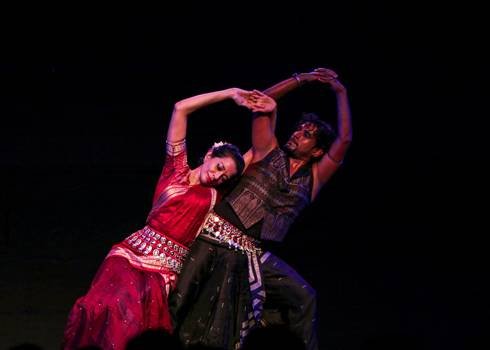South-Asian
South-Asian History in Hong Kong
early 19th century
During British colonial rule, which began in 1841, the colonial government recruited soldiers, policemen, and professionals from India to enforce authority and develop infrastructure, resulting in the construction of many well-known organizations and buildings such as the Star Ferry Company Limited, Ruttonjee Hospital, and the University of Hong Kong.
In the early 20th century, Nepalese were recruited to serve under contract in the army, which later became the famous British Army’s Brigade of Gurkhas.
Hong Kong Census report 2021
About 8.4% of Hong Kong population are ethnic minorities. The major ethnic groups included Indonesian, Filipino, White, Indian, Pakistani, Nepalese, Thai and others.

South-Asia Region Religion
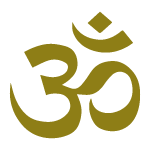
Hinduism
・Worship many gods and goddesses
・Usually are vegetarian
・Not allow to eat pork
・Not allow to drink alcohol
*Depend on their religious beliefs and personal choices, their eating habits may differ.

Islam
・The Five Pillars of Islam are some basic acts in Islam
・Halal food only
・Not allow to eat pork
・Not allow to drink alcohol
*Depend on their religious beliefs and personal choices, their eating habits may differ.
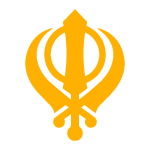
Sikhism
・Sikhs wear the 5 Ks as an outward sign of their commitment
・No dietary law, allow to eat meat
・Jhatka meat
・Not allow to drink alcohol and smoke
*Depend on their religious beliefs and personal choices, their eating habits may differ.
Religion population

India
- Hinduism 80%
- Islam 14%
- Sikhism 2%
- Other 4%
*information is for reference only
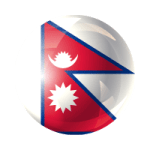
Nepal
- Hinduism 81%
- Islam 12.5%
- Sikhism 1.5%
- Other 5%
*information is for reference only

Pakistan
- Hinduism 2%
- Islam 95%
- Sikhism 1%
- Other 2%
*information is for reference only
Sikhs 5Ks
Muslim Head covering
Male costume


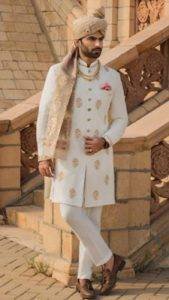
female costume
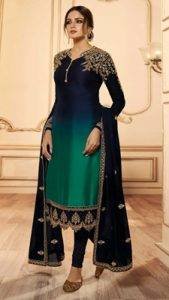
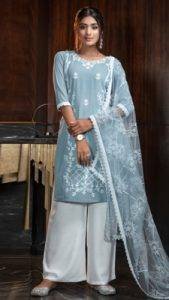
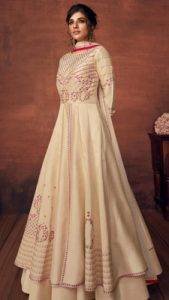
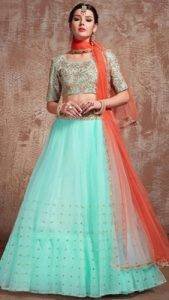
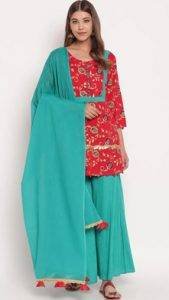
*Depend on their religious beliefs and personal choices, their clothings may differ.
*The costume may be named differently in different regions, information is provided for reference only.
festival
Baisakhi or Vaisakhi is an important festival celebrated by the Sikh community. It is the harvest festival and Punjabi New Year, all rolled into one. Bhangra, the Punjabi folk dance is performed with fervor on Baisakhi.
Besides the harvest season, Baisakhi also marks the birth of Khalsa. By organizing the Sikhs into Khalsa, Guru Gobind Singh eliminated the differences between high and low. He established that all the human beings were equal in the eyes of God.
Baisakhi. Baisakhi Festival falls on April 14th and marks the beginning of the solar year. People of North India, particularly Punjab thank God for good harvest. Visit to Gurudwaras, Vaisakhi processions and traditional performances are the highlights of the day.
Date : April 14th 2021, April 14th 2022
Special Food : Chhole bharture, Makke ki roti and sarso Ka saag, Punjabi kadhi and chawal, Coconut ladoo, Mango lassi, Pindi chane
Diwali, or Deepawali, is observed with equal fervor by Hindus all over India, and the world. The festival was celebrated for the first time when Lord Rama returned to Ayodhya from exile after 14 long years. People of Ayodhya celebrated the event by lighting lamps on the doorsteps and windowsills. Even today, small clay lamps and candles are lit during the celebration. The lights represent the victory of the good over evil. The celebrations also mark numerous cultural programs. Exchanging sweets and gifts is also a long-standing tradition of Diwali.
There is also a tradition of worshipping Goddess Lakshmi on the evening of Diwali. Though Diwali is a 5-day festival, people start preparing for it weeks before the actual festival. They clean and beautify their houses. It’s said that Goddess Lakshmi only enters houses that are clean and brightly illuminated.
The last day of Diwali marks the festival of Bhai Dooj. Bhai Dooj falls on the Shukla Paksha Dwitiya in the Hindu month of Kartik. It is known by various names in different regions of India. On this day, sisters perform aarti of their brothers and apply a ‘tilak’ on their forehead. This is followed by exchanging gifts and sweets.
Date : November 4th 2021, October 24th 2022
Special food : Shankar pare, Gujiya, Gulab jamun, Chivda, Dhokla, Laddoo, Kaju katli, Chevda
Ganesh Chaturthi is the most important festival in Maharashtra. This 10-day long festival honors the birth of the beloved, elephant-headed God, Lord Ganesh. It begins on the Shukla Chaturthi and ends on the Anant Chaturdashiof the Bhadrapad month. Legends say that Lord Shiva created Lord Ganesh as the obstacle-averter in the path of Devas and obstacle-creator in the way of demons.
Huge, beautifully crafted statues of Lord Ganesha, are installed in the homes and podiums of the devotees. A special sweet called Modak is prepared and offered to Lord Ganesh on the day of the festival. At the end of the festivities, the statues are paraded through the streets and immersed in the ocean.
Date : September 10th 2021, 22nd August 2022
Special Food : Modak, Mithi bundi, Besan ke ladoo, Churma ladoo, Mawa naryal ki barfi
The name ‘Holi’ comes from the Sanskrit words from ‘Holika Dahanam’, which means ‘Holika’s slaying.’ This colorful festival is celebrated on the Purnima or Full moonaccording to the Hindu calendar. The ceremony of Holika Dahan is observed on the first day. The following day, people celebrate Holi by throwing colored powder and squirting colored water upon each other. Kids dunk each other in mud pools. In many parts of India, people also consume Bhang, a paste made from the cannabis plant, during Holi.
Holi is also celebrated in the memory of the immortal love of Radha and Krishna. Young Krishna would always complain to his mother why Radha had a fair complexion while he was dark. Yashodha suggested him to apply color on Radha’s face to change her complexion. In some regions, Holi glorifies the new harvest and return of color in nature. It is an important festival of India.
Date : March 29 2021, March 18th 2022
Special : Gujiya- an authentic holi sweet, Bhaang ladoo, Rasmalai, Malpua, Puran poli
Navaratri is the Hindu festival of dance and worship. The Sanskrit meaning of the term Navaratri is ‘nine nights’. During this festival, people worship forms of Shakti. In Gujarat, Navaratri is the time for lively Garba dance. Men and women dance around an earthen lamp on devotional music. And in Tamil Nadu, the first three days of Navaratri are dedicated to Goddess Lakshmi, the other three days to Goddess Durga and the last three days to Goddess Saraswati. Dussehra or Vijayadashami as it is commonly called is the day that follows the nine days of Navaratri. Dussehra commemorates the defeat of Ravana by Lord Rama. During the nine days of Navaratri, Ramleela, an enactment of Rama’s story is staged in various parts of the cities, towns and villages. Folk music constantly accompanies the performance of Ram Leela. On the tenth day, the actor playing the role of Rama throws fiery arrows on larger than life effigies of Ravana’s, Meghnath and Kumbhkarna. These effigies are filled with fireworks that result in a brilliant spectacle. The clamor is enhanced by the shouts of merriment by the spectators.
The festival of Dussehra also coincides with the victory of Goddess Durga over the demon. Durga Puja is celebrated jubilantly in West Bengal. Dance, drama, and cultural performances are held throughout the state. The pandals are decorated beautifully, and people gather in large numbers to enjoy the festivities. The city looks like an open-air art gallery. The vibrant festival lasts for ten days, out of which nine days are spent in worship, and one the tenth day, huge statues of Goddess are immersed in the Ganges River.
Date : October 6th – 14th 2021, September 26-October 4 2022
Raksha Bandhan, a festival celebrating the noblest and the deepest bond between a brother and sister, is observed by Hindus and Sikhs. It falls on the brightest night of the month of Shravan.
On this day, sisters tie a sacred thread on their brothers’ wrists. The thread reminds the brother of the responsibility he has towards his sister. It signifies that the brothers have to protect their sister under all circumstances. This ritual is followed by the exchange of gifts and sweets.
Raksha Bandhan is observed on the last day of the Hindu lunar calendar month of Shraavana, which typically falls in August. The expression “Raksha Bandhan,” Sanskrit, literally, “the bond of protection, obligation, or care,” is now principally applied to this ritual.
Date : August 21 2021, August 11th 2022
Special Food : Malai peda, Kaju badam bolls, Gulab jamun, Fruit custard, Magaj, Kalakand, Chocolate peda, Malpua
Ramadan is the ninth month of the Islamic calendar. It is a month of fasting, prayer, giving and self-evaluation observed by Muslims. The month lasts 29-30 days depending on the sightings of the crescent moon.
Date : April 13th 2021, April 3rd 2022
Eid-Ul-Fitr is the most important festival in the Muslim community, not just in India, but also across the globe. The festival marks the most significant day in the Islam, the completion of 30 days long fast of Ramadan.
The 3-day celebration includes wearing new clothes, exchanging gifts and giving small sums of money to children. Visiting friends and relatives to exchange greetings is also a feature of this festival.
The festival is a day when Muslims thank Allah for strength and blessings, hoping Ramadan has brought them closer to god. It was first celebrated by Muhammad in 624CE following a victory in battle.
Date : May 12th, 13th 2021, May 2nd, 3rd 2022
Special Food : Badam phirni, Seviyan, Kopea paak, Sheer korma, Paneer saag, Jeera paratha
Art & Sport
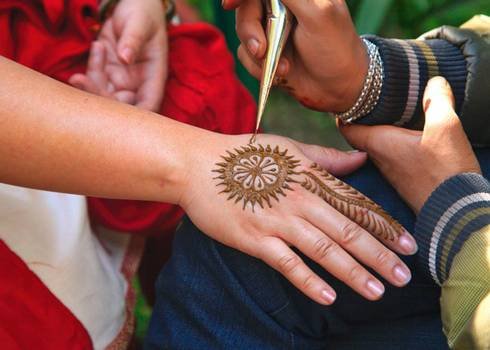
Henna
Mehndi (aka Indian tattoo, henna drawing) is a form of body art and Henna is the medium used in creating Mehndi. The earliest use of Henna dates back to 4000 years ago in Egypt. Then the technique has spread to South-Asia, West-Asia and Middle-East regions, and Mehndi became popular and the traditional art till today.
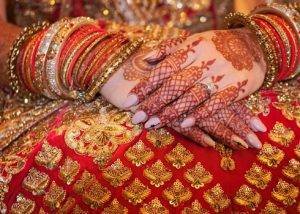
Henna plant was regarded as a lucky and joyful plant, the henna leaves were used to make perfume or dye. The henna leaves contain lawsone (a red-orange pigment), which will create a red stain when it binds with the proteins. People use the dried henna leaves and mashed them into a paste and apply the paste on the skin to create mehndi pattern.
Nature henna paste is dark green or brown colour.
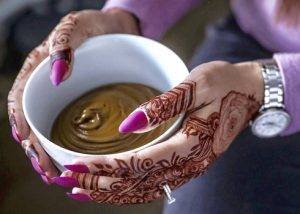
Other colour (black) cones usually added chemical ingredients which may cause redness or allergic to the skin, therefore not recommend to use (news report).
*G6PDD, eczema or skin allergies are not suitable to apply henna

